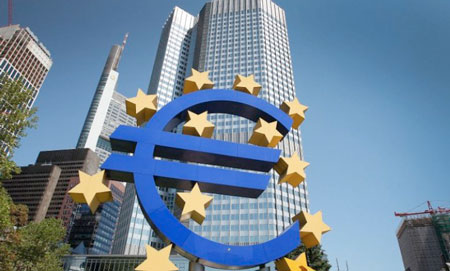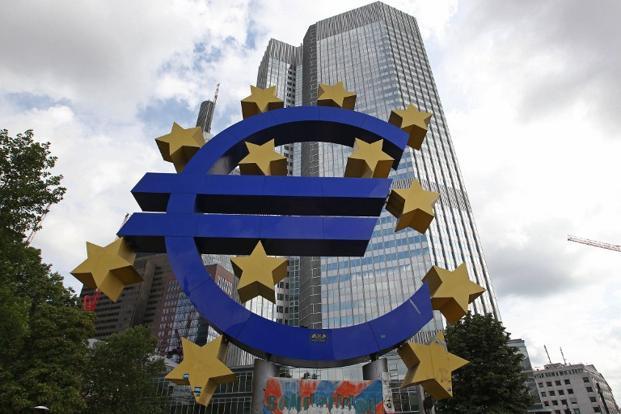Euro Area Investment Fund Statistics: December 2014

19 February 2015 – Financial statements of the ECB for 2014
- ECB’s net profit for 2014: €989 million (2013: €1,440 million)
- Net interest income from the Securities Markets Programme: €728 million (2013: €962 million)
- Interest income on banknotes: €126 million (2013: €406 million)
- Size of the ECB’s balance sheet: €185 billion (2013: €174 billion)
The Governing Council of the European Central Bank (ECB) yesterday approved the audited Annual Accounts of the ECB for the year ending 31 December 2014. [1]
The Governing Council decided to transfer as at 31 December 2014 an amount of €15 million (2013: €0.4 million) to the risk provision, which increased it to the level of its ceiling of €7,575 million as at that date. The purpose of the risk provision is to cover foreign exchange rate, interest rate, credit and gold price risks, which are monitored on an ongoing basis. The size of this provision is reviewed annually. As a result of the transfer to the risk provision, the ECB’s net profit for 2014 was €989 million (2013: €1,440 million). The decrease was mainly due to (a) the lower interest income on banknotes as a result of the lower average rate on the main refinancing operations; (b) a decrease in the net interest income from the Securities Markets Programme (SMP) owing to redemptions; and (c) the higher operating expenses, primarily owing to costs associated with the establishment of the Single Supervisory Mechanism (SSM).
The Governing Council decided to make an interim profit distribution, amounting to €841 million, to the euro area national central banks (NCBs) on 30 January 2015. At yesterday’s meeting the Governing Council decided to distribute the remainder of the profit, amounting to €148 million, to the euro area NCBs on 20 February 2015.
The ECB’s income derives mainly from investment earnings on its foreign reserves portfolio and own funds portfolio, from interest income on its 8% share of the total euro banknotes in circulation and, in recent years, from net interest income arising from securities purchased for monetary policy purposes.
Net interest income totalled €1,536 million in 2014 (2013: €2,005 million). It included interest income of €126 million earned on the ECB’s share of the total euro banknotes in circulation (2013: €406 million) and net interest income of €728 million (2013: €962 million) arising from securities purchased under the SMP, of which €298 million (2013: €437 million) arose from the ECB’s SMP holdings of Greek government bonds. It also included net interest income of €174 million (2013: €204 million) arising from securities purchased under the three covered bond purchase programmes and €1 million arising from securities purchased under the asset-backed securities purchase programme (ABSPP). The ECB paid remuneration of €57 million (2013: €192 million) to the NCBs on their claims in respect of the foreign reserve assets transferred by them to the ECB, while interest income on foreign reserve assets amounted to €217 million (2013: €187 million).
Realised gains arising from financial operations amounted to €57 million (2013: €52 million).
Write-downs amounted to €8 million in 2014 (2013: €115 million). The significantly lower write-downs in 2014 were mainly due to the overall increase in the market value of the securities held in both the US dollar portfolio and the own funds portfolio.
The ECB’s administrative expenses consist of staff costs and all other administrative expenses. Staff costs rose to €301 million in 2014 (2013: €241 million) as staff numbers gradually increased over the year owing to the preparations for the launch of the SSM in November 2014.Expenditure related to the SSM incurred in November and December 2014 amounted to €30 million. This amount will be invoiced in 2015 but is recorded as income from fees in the ECB’s Profit and Loss Account for 2014 on an accrual basis.
Other administrative expenses, comprising rental of premises, professional fees and other goods and services, amounted to €376 million in 2014 (2013: €287 million). The vast majority of the costs incurred in connection with the construction of the ECB’s new premises have been capitalised and are excluded from this item. After the ECB moved into its new premises in November 2014 the capitalised expenditure incurred up to that point was transferred from “Assets under construction” to the appropriate fixed asset headings. The depreciation of the ECB’s new premises commenced in January 2015, in line with the ECB’s normal depreciation policy.
The total size of the ECB’s balance sheet increased by €11 billion to €185 billion in 2014 (2013: €174 billion). This increase was mainly due to the appreciation of foreign reserve assets and of gold held by the ECB, as well the increase in banknotes in circulation.
The consolidated balance sheet of the Eurosystem amounted to €2,208 billion at the end of 2014, compared with €2,273 billion in 2013. Total liabilities decreased, mainly owing to the suspension of the weekly fine-tuning operation sterilising the liquidity injected under the SMP, which resulted in a reduction in “fixed-term deposits”. Total assets decreased, mainly owing to early repayments by counterparties of the amounts allotted to them under the two three-year longer-term refinancing operations.
The Eurosystem’s holdings of securities held for monetary policy purposes decreased by €19 billion to €217 billion (2013: €236 billion). Securities held under the SMP declined by €34.5 billion owing to redemptions. This reduction was partially offset by securities purchased under the third covered bond purchase programme and the ABSPP which commenced in late 2014 and amounted to €31.3 billion at the year-end.
The management report, which in previous years was published with the ECB’s Annual Report, is an integral part of the ECB’s annual financial reporting and provides contextual information that enables readers to better understand the business of the ECB, its operational framework and the impact of the ECB’s operations on its financial statements. This year the management report has been enhanced by including information directly relevant to the financial statements of the ECB.
Investment fund shares/units issued (EUR billions and annual growth rates; not seasonally adjusted; amounts outstanding at the end of the period, transactions during the period)
Source: ECB






























